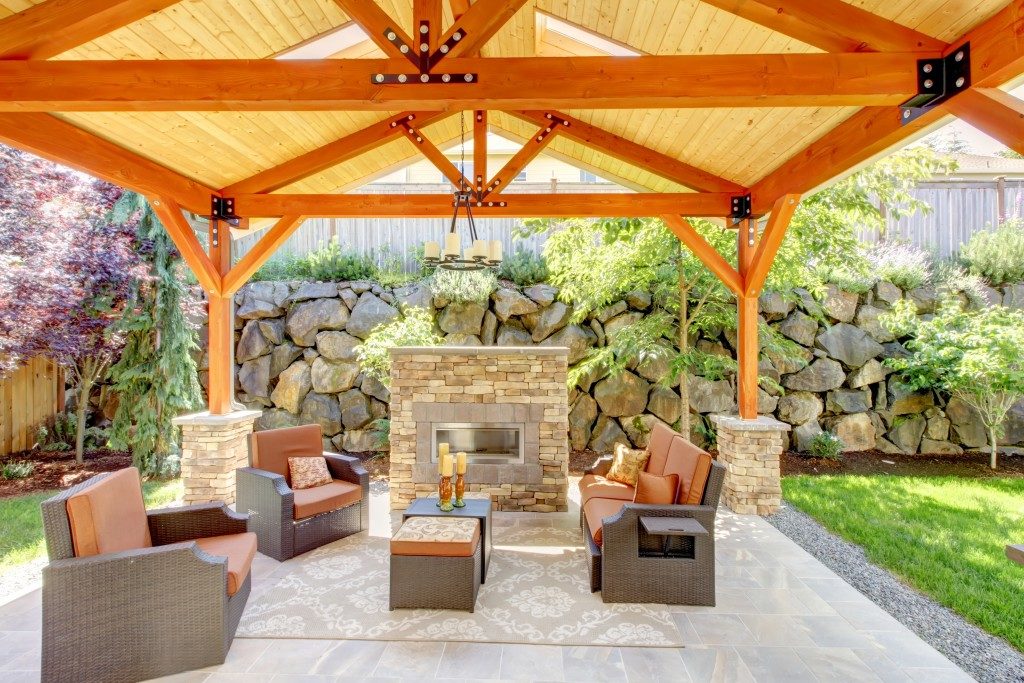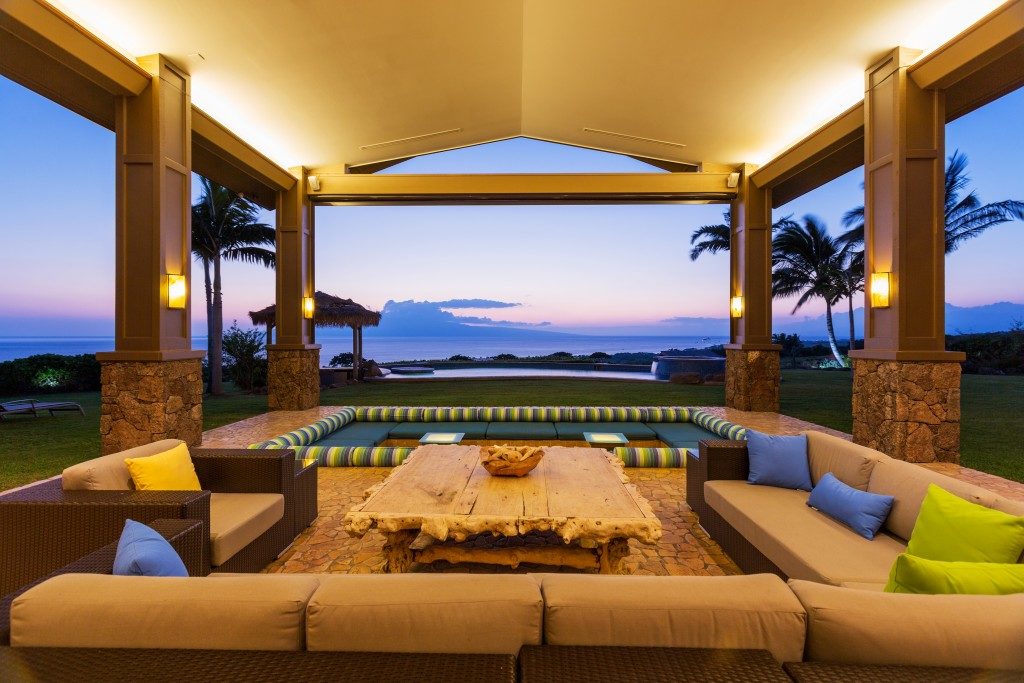The word ‘patio’ originates from a Spanish word which means the back garden or backyard. In Spanish-style homes, the patio is an open inner court. In normal conversation, however, this denotes outdoor living spaces which are used for relaxation, entertainment or dining.
You can opt to include or exclude a wall or roof in your patio depending on your preference and the climate in your area. Most people believe that patios are a preserve of those with a lot of outdoor space, but this is an erroneous assumption.
Patios will fit into any Sunshine Coast property, provided you pick the right shape to fit your available space. Other than space, your patio’s shape will be determined by your budget, the architectural design of your home and its intended use. The following are some of your patio shape options.
L-Shaped and U-Shaped Patios
These patios are designed to ‘hug’ your home’s exterior and are accessible from various rooms. L and U-shaped patios are inexpensive to build and give you abundant outdoor space. Moreover, they will form a smooth and almost natural transition between your indoors to the outdoors. They are an ideal shape for homeowners who want bountiful space on their patio for entertaining.
Round Patios
These are built around a focal point which is in most cases a dining table, built-in spa, fire pit or water fountain. U-shaped patios are a variant of the round patio in a half-circle shape. Full circle patios will typically be built independently from your primary residence and will draw people into your yard.
They naturally blend into your landscape since they have no sharp angles or hard edges. Bricks and pavers are ideal alternatives for the paving of round patios since they can be easily laid in circular patterns to complement the shape.
Rectangular and Square Patios

These are the most popular shapes for patios in buildings with a contemporary or formal design. Though not very creative, a square or rectangular patio is cost-effective, practical and ideal for hosting large groups.
You can designate different areas on these patios by changing the material you use for paving or installing a hot tub or bistro table. Bricks and pavers laid out in square patterns are commonly used for paving these patios though cut stone can also suffice.
Free-Form Patios
These feature non-predictable shapes. Sweeping curves characterize some while others feature irregular shape and angle changes. Free-form patio shapes are asymmetrical and have an unrefined feel thus making them ideal for those with informal landscapes.
The best choice for paving a free-form patio is concrete since this can be formed into virtually any shape. Flagstone can also suffice for paving provided it is laid by an expert.
Most people assume that the words ‘deck’ and ‘patio’ denote the same thing. A deck is however covered with wood or synthetic materials which resemble wood.
Patios, on the other hand, are covered with pavers, brick, tile and other outdoor flooring materials. They are far easier to maintain compared to decks. With the shape options mentioned earlier, you are sure to find one which suits your intended use, budget, and available property space.




